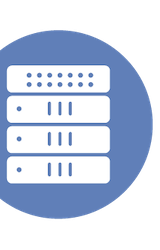In this episode of the Gestalt IT Rundown, Tom Hollingsworth and Rich Stroffolino discussed the recent acquisition of Datrium by VMware. This was positioned as a DRaaS play for VMware’s cloud offerings, helping to refine their overall DR strategy. Rich found it interesting that Datrium had been billing themselves as a HCI vendor, to have them acquired for DR assets.
Monday Hot Take: VMware Acquires Datrium
In this edition of Gina Rosenthal’s Monday Hot Takes, she breaks down the acquisition of Datrium by VMware. She discusses how VMware will integrate this acquisition into their overall cloud disaster recovery plans. To get up to date on all that Datrium offers, she went to the Tech Field Day presentation archives to get up to speed on their tech stack. What stuck her was how much of Datrium was built to be a competitor to VSAN, and how deliberate VMware was in their announcement to stick to a DRaaS play with the acquisition.
VMware to Acquire Datrium
For Chris Evans, VMware’s approach to disaster recovery had seemed to take a pretty old school approach of emulating array-based replication, based on what he saw at Cloud Field Day earlier this year. This left a potential gap in their approach, that seems to have been filled by their recently announced acquisition of Datrium. This now gives VMware a modern DR solution that stands up to competing offerings, and adds a data mobility solution that extends out of the private data center and allows data migrations between public clouds.
How Datrium ControlShift Uses VMware Cloud on AWS for Cloud-Native Disaster Recovery
In this post, Joep Piscaer digs into Datrium’s ControlShift cloud-native disaster recovery solution. He previously heard from Datrium on this in detail at Cloud Field Day this spring. What makes ControlShift stand out for DR is the ability to cold start a recovery from the cloud. He runs through various recovery destinations and scenarios in the piece. Overall, he found it a very well thought out product.
Datrium Delivers Data Mobility With Automatrix
In this piece, Chris Evans looks at how Datrium is taking the data mobility problem with their Automatrix solution, which they talked about during their recent Cloud Field Day presentation. If Automatrix can deliver the same data movement flexibility for containers that are being achieved for virtual machines, he sees it being an all-encompassing solution for data mobility.
How Datrium Deploys ControlShift Into the Cloud
Datrium returned to Field Day with a presentation at Cloud Field Day earlier this year. Joep Piscaer was one of the delegates at the event, and in this piece looks at the company’s Disaster Recovery runbook automation engine for virtualized workloads called ControlShift. Joep was impressed by how Datrium deploys the solution and reviews how to set up ControlShift in a customer AWS account.
Datrium’s Multi-Cloud Vision Is All About Consistency
As interest in hybrid and mutli-cloud operation models increases in the enterprise, a recurring theme has been emerging. Consistency is key. Datrium wants to provide the consistency that allows enterprise customers to select the public cloud of their choice and maintain the same tools and knowledge. Ken Nalbone saw the company present at Cloud Field Day, and thinks they are likely betting on VMware being the common platform across multiple clouds and that the ability for enterprises to move their applications without refactoring will be the preferred path to the cloud for many enterprise customers.
Cloud Field Day 2019 – It’s a Wrap
Datrium is no stranger to presenting at Field Day events, and it was great to have them at Cloud Field Day last month. By converging data services onto a single platform, they are able to offer simple, secure, consistent experience across their on-premises and multi-cloud environments. Their presentation focused specifically on how it can enable a true multi-cloud experience with sophisticated orchestration. Be sure to watch the full presentation video to get caught up.
Datrium to Present at Gestalt IT’s Cloud Field Day 5 on How to Build Consistent Data Services Across Hybrid Clouds
Datrium’s presentation at Cloud Field Day focused on the challenges and importance of providing a uniform experience across clouds and how Datrium’s solution enables consistent data services across private and public clouds. It also featured a deep dive into their software-defined converged infrastructure approach, which simplifies primary and backup storage, data security and DR orchestration. Be sure to check out the full video of their presentation to see if for yourself.
Cloud Field Day – Datrium
Ned Bellavance is nothing if not diligent, doing research on the presenting companies before heading out to Silicon Valley. In this post, he’s giving Datrium a closer look. He looks at the companies major products including On-Prem DVX, Cloud DVX, and CloudShift. The latter really piqued his interest with it’s DR as a Service approach. He’s got questions about cloud exclusivity, recovery outside of VMC, and container workloads that he’s looking foward to asking at the event.
Storage Field Day 15: The open convergence by Datrium
Datrium presented at Storage Field Day last month. Lino Telera got to hear about their concept of Open Convergence. This bucks the trend of traditional HCI, offering a different model for delivering tier-1 and secondary data in a scalable solution. They do this with an architecture build around stateless compute nodes and stateful storage nodes. This provides less cross talk between nodes, and allows for truly remarkable scale, as Lino saw during their presentation.
Convergence Without Compromise
Josh De Jong takes a look at an interesting approach to hyperconverged infrastructure from Datrium with DVX. Their approach separates compute nodes from storage. Each compute node has a SSD used for cachining, which results in increased performance when adding nodes. Josh looks of Datrium is now developing how to move their HCI stack to the cloud.
Little’s Law: For Estimation Only
Dr. Rachel Traylor heard Datrium reference Little’s Law during their presentation at Storage Field Day last month. Little’s Law provides a way to smooth out some of the random variables in queuing theory into something more deterministic. As Dr. Traylor explains, this makes it idea for quick estimations, but it’s not a silver bullet for such a complex field of mathematics.
Datrium Cloud DVX – Not Your Father’s Cloud Data Protection Solution
Datrium presented at their second Storage Field Day, providing details on their Cloud DVX solution. Dan Frith wrote up his thoughts on it, and whether it lives up to Datrium’s claim of being “Cloud Backup Done Right”. Compared to a lot of “cloud-ready” data protection solution, Dan found Cloud DVX to be an “elegant solution”, with a lot of efficiency that should be very appealing to Datrium customers.
Datrium @ Storage TechFieldDay
Datrium’s Andre Leibovici posted about their recent Storage Field Day presentation on his blog. The company presented on the latest updates to their DVX solution. Andre shares some delegate coverage and full video from the event.
#SFD15: Datrium impresses
Glenn Dekhayser saw a lot of interesting technology at Storage Field Day, but Datrium stood out to him with their focus on end user experience and value extraction from technology. Using a looser definition of HCI with discretely scalable compute and storage nodes, Datrium’s solution offers all the table stakes features expected in an HCI system. What distinguishes it is a robust GUI with lots of telemetry and easy provisioning options, as well as tight cloud integration with AWS.
Datrium Technology Update
Pietro Piutti was impressed by the fresh and unique approach of Datrium at Tech Field Day in May. Now he is looking at their two major technology updates. The first of these announcements is that Datrium will be extending its support beyond VMware. By doing so, Datrium positions themselves as the one single converged platform that can serve vSphere, RHV/oVirt, and Docker workloads. The second and arguably bigger announcement is Split Provisioning, the possibility independently to scale Compute Nodes (up to 128) and Data Nodes (up to 10). These two milestones represent a huge advancement allowing customers to deploy multi-hypervisor infrastructures with different size options, from a small “one-rack” deployment up to a large one for Service Providers use cases.
The Year of Cloud Extension
The idea of incorporating cloud storage into the data center has been around for a while. But Stephen Foskett thinks we’re seeing philosophically different approaches to it recently, with many companies embracing the premise of data non-locality. Stephen sees this change in the assumption from data being tied to a data center to the cloud as a transformative shift allowing for true data center transformation.
The Purity of Hyperconverged Infrastructure: What’s in a Name?
Scott Lowe isn’t too high on the term Hyperconverged Infrastructure. For Scott, it’s basically a catch all for some combination of storage and compute in a single appliance. But increasingly, though HCI broadly offers simplicity, it can fail to meet the specific needs of an organization. Scott looks at solutions from Datrium, Dell EMC ScaleIO, and NetApp that all could be categorized as HCI, but take a fundamentally different approach.
#TFD14 Recap – Datrium: not the HCI solution you’d expect
According to Pietro Piutti, HCI has certainly eased some of the traditional pain points of virtualization, ease of deployment and scalability, but with some tradeoffs. The interdependency of HCI nodes effectively makes takes away their stateless nature, as is the can in a more traditional SAN based model. Datrium’s DVX solution solves this by differentiating data and compute nodes, which reduce east-west chatter and returns servers to statelessness. Make sure to check out Pietro’s post for a technical deep dive.







